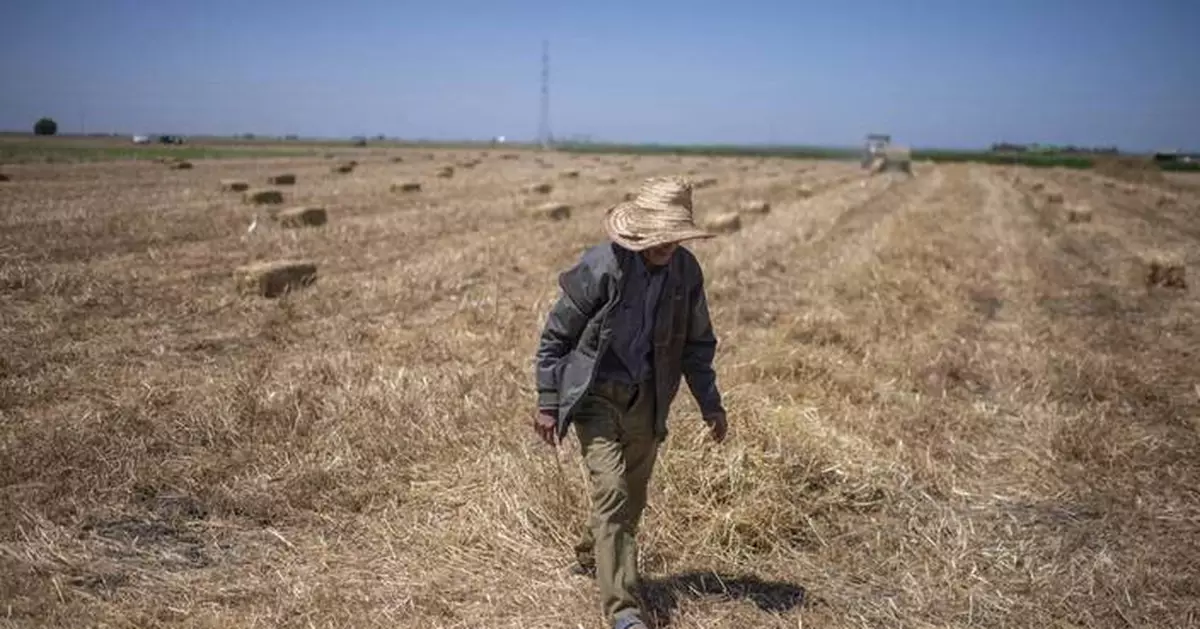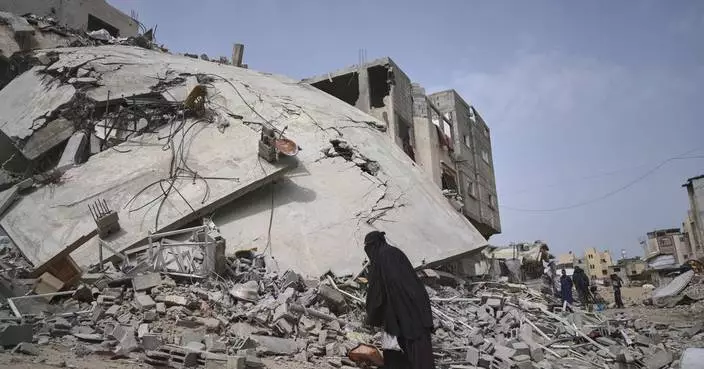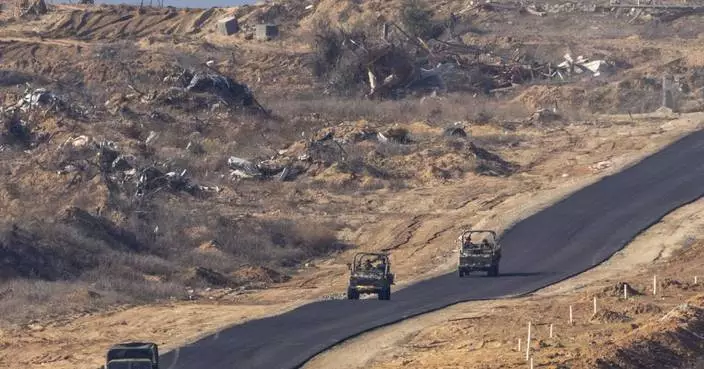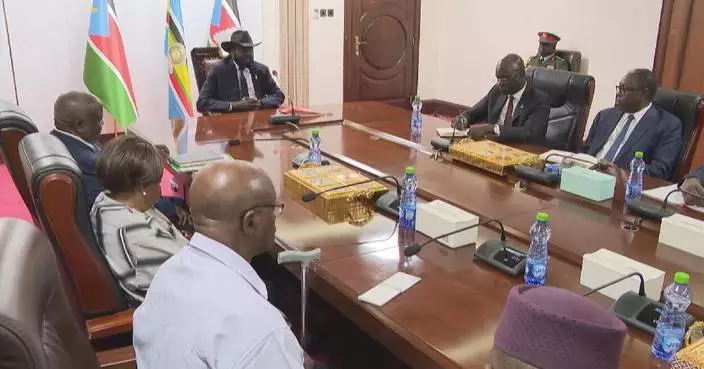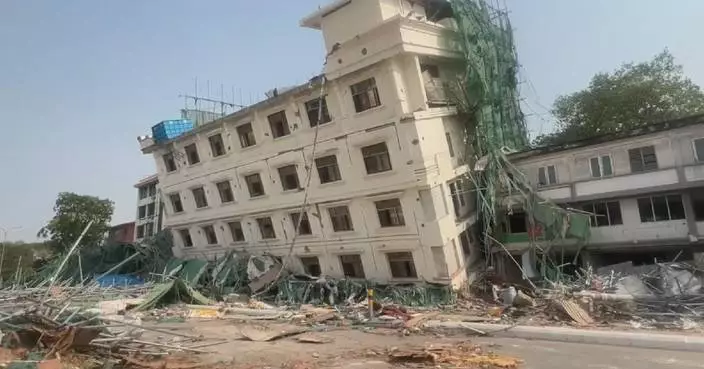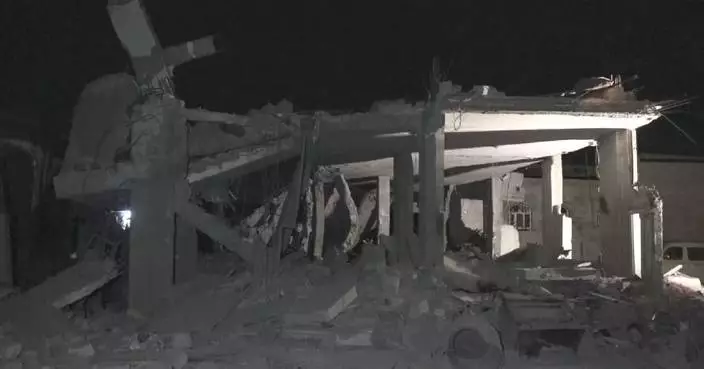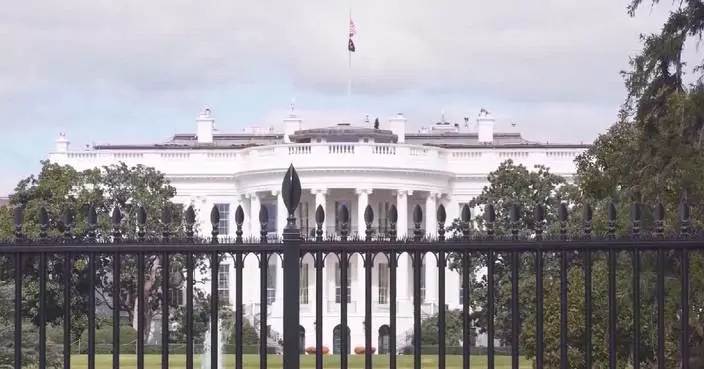KENITRA, Morocco (AP) — Golden fields of wheat no longer produce the bounty they once did in Morocco. A six-year drought has imperiled the country's entire agriculture sector, including farmers who grow cereals and grains used to feed humans and livestock.
The North African nation projects this year's harvest will be smaller than last year in both volume and acreage, putting farmers out of work and requiring more imports and government subsidies to prevent the price of staples like flour from rising for everyday consumers.
Click to Gallery
A farmer works in a wheat field on the outskirts of Kenitra, Morocco, Friday, June 21, 2024. (AP Photo)
Harvested wheat from a farm on the outskirts of Kenitra, Morocco, Friday, June 21, 2024. (AP Photo)
Abdelkrim Naaman, the chairman of the NGO Nalsya, right, advises a farmer on seeding, irrigation and drought mitigation, on a farm on the outskirts of Kenitra, Morocco, Friday, June 21, 2024. (AP Photo)
A farmer works in a wheat field on the outskirts of Kenitra, Morocco, Friday, June 21, 2024. (AP Photo)
Wheat grows in a wheat farm on the outskirts of Kenitra, Morocco, Friday, June 21, 2024. (AP Photo)
Farmers work on a wheat farm on the outskirts of Kenitra, Morocco, Friday, June 21, 2024. (AP Photo)
A farmer works in a wheat field on the outskirts of Kenitra, Morocco, Friday, June 21, 2024. Golden fields of wheat no longer produce the bounty they once did in Morocco. A six-year drought has imperiled the country's entire agriculture sector, including farmers who grow cereals and grains used to feed humans and animals. (AP Photo)
“In the past, we used to have a bounty — a lot of wheat. But during the last seven or eight years, the harvest has been very low because of the drought," said Al Housni Belhoussni, a small-scale farmer who has long tilled fields outside of the city of Kenitra.
Belhoussni's plight is familiar to grain farmers throughout the world confronting a hotter and drier future. Climate change is imperiling the food supply and, in regions like North Africa, shrinking the annual yields of cereals that dominate diets around the world — wheat, rice, maize and barley.
The region is one of the most vulnerable in the world to climate change. Delays to annual rains and inconsistent weather patterns have pushed the growing season later in the year and made planning difficult for farmers.
In Morocco, where cereals account for most of the farmed land and agriculture employs the majority of workers in rural regions, the drought is wreaking havoc and touching off major changes that will transform the makeup of the economy. It has forced some to leave their fields fallow. It has also made the areas they do elect to cultivate less productive, producing far fewer sacks of wheat to sell than they once did.
In response, the government has announced restrictions on water use in urban areas — including on public baths and car washes — and in rural ones, where water going to farms has been rationed.
“The late rains during the autumn season affected the agriculture campaign. This year, only the spring rains, especially during the month of March, managed to rescue the crops,” said Abdelkrim Naaman, the chairman of Nalsya. The organization has advised farmers on seeding, irrigation and drought mitigation as less rain falls and less water flows through Morocco's rivers.
The Agriculture Ministry estimates that this year's wheat harvest will yield roughly 3.4 million tons (3.1 billion kilograms), far less than last year's 6.1 million tons (5.5 billion kilograms) — a yield that was still considered low. The amount of land seeded has dramatically shrunk as well, from 14,170 square miles (36,700 square kilometers) to 9,540 square miles (24,700 square kilometers).
Such a drop constitutes a crisis, said Driss Aissaoui, an analyst and former member of the Moroccan Ministry for Agriculture.
"When we say crisis, this means that you have to import more," he said. “We are in a country where drought has become a structural issue."
Leaning more on imports means the government will have to continue subsidizing prices to ensure households and livestock farmers can afford dietary staples for their families and flocks, said Rachid Benali, the chairman of the farming lobby COMADER.
The country imported nearly 2.5 million tons of common wheat between January and June. However, such a solution may have an expiration date, particularly because Morocco's primary source of wheat, France, is facing shrinking harvests as well.
The United Nations' Food and Agriculture Organization ranked Morocco as the world's sixth-largest wheat importer this year, between Turkey and Bangladesh, which both have much bigger populations.
“Morocco has known droughts like this and in some cases known droughts that las longer than 10 years. But the problem, this time especially, is climate change,” Benali said.
__
Hassan Alaoui contributed reporting from Rabat and Kenitra, Morocco.
__
This story has been updated to clarify that the annual yields of the main cereal crops are falling in North Africa, but not globally.
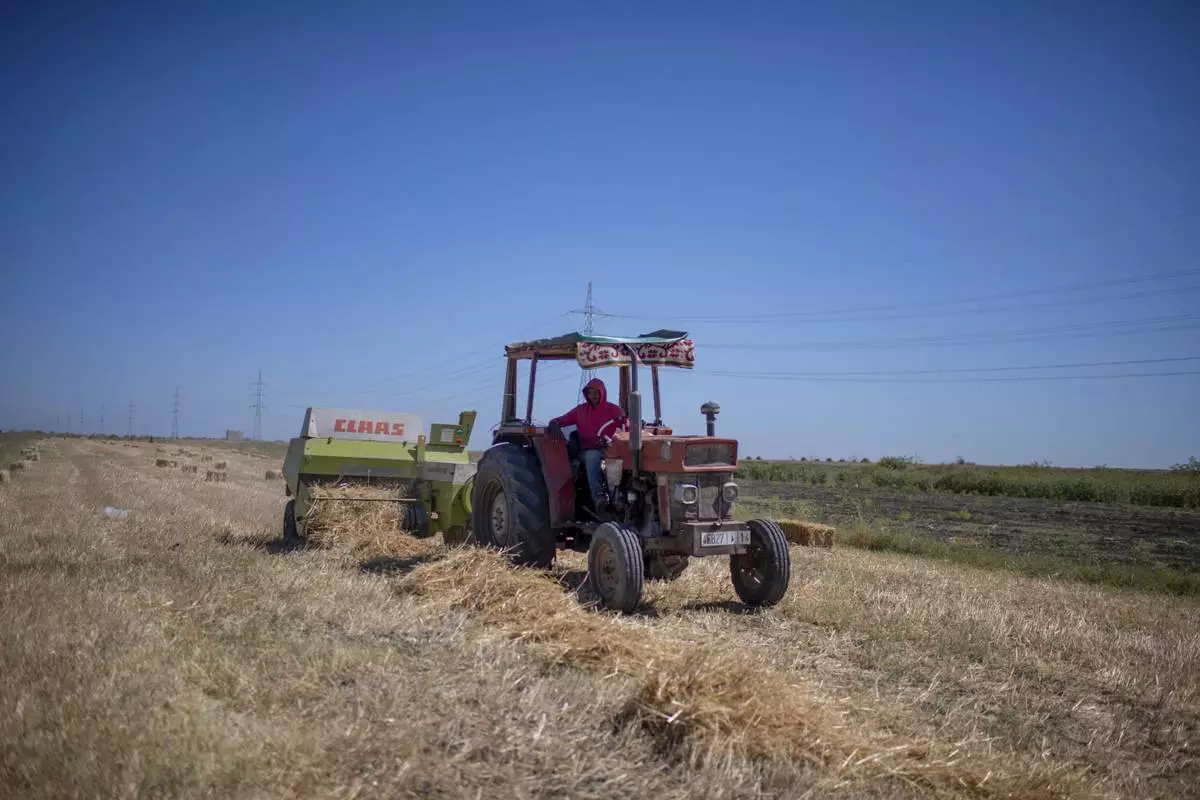
A farmer works in a wheat field on the outskirts of Kenitra, Morocco, Friday, June 21, 2024. (AP Photo)
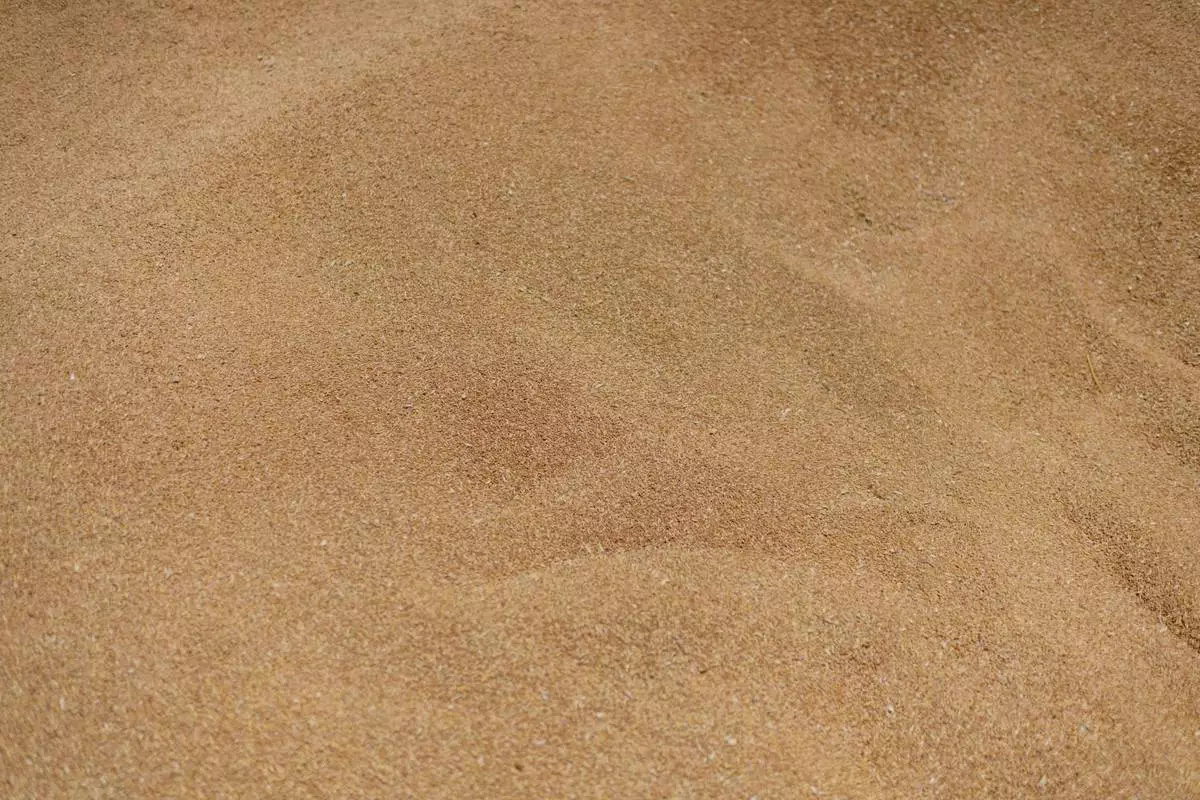
Harvested wheat from a farm on the outskirts of Kenitra, Morocco, Friday, June 21, 2024. (AP Photo)
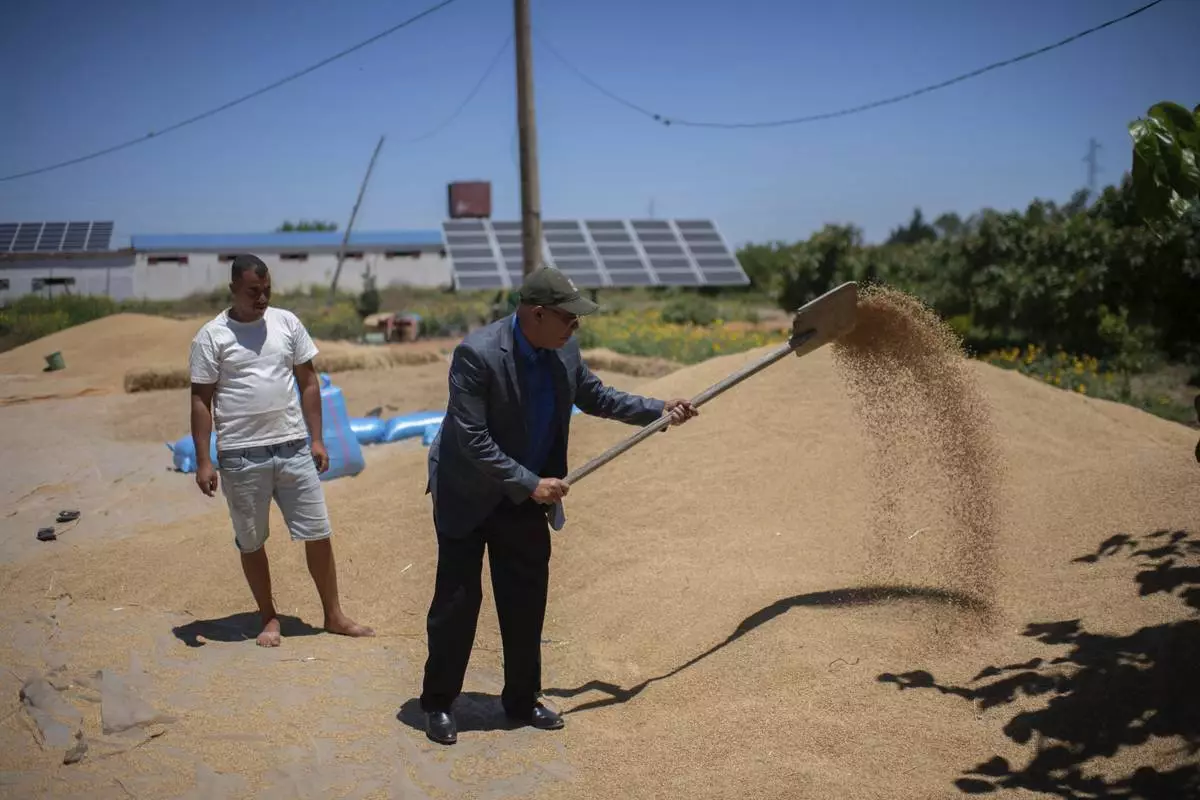
Abdelkrim Naaman, the chairman of the NGO Nalsya, right, advises a farmer on seeding, irrigation and drought mitigation, on a farm on the outskirts of Kenitra, Morocco, Friday, June 21, 2024. (AP Photo)
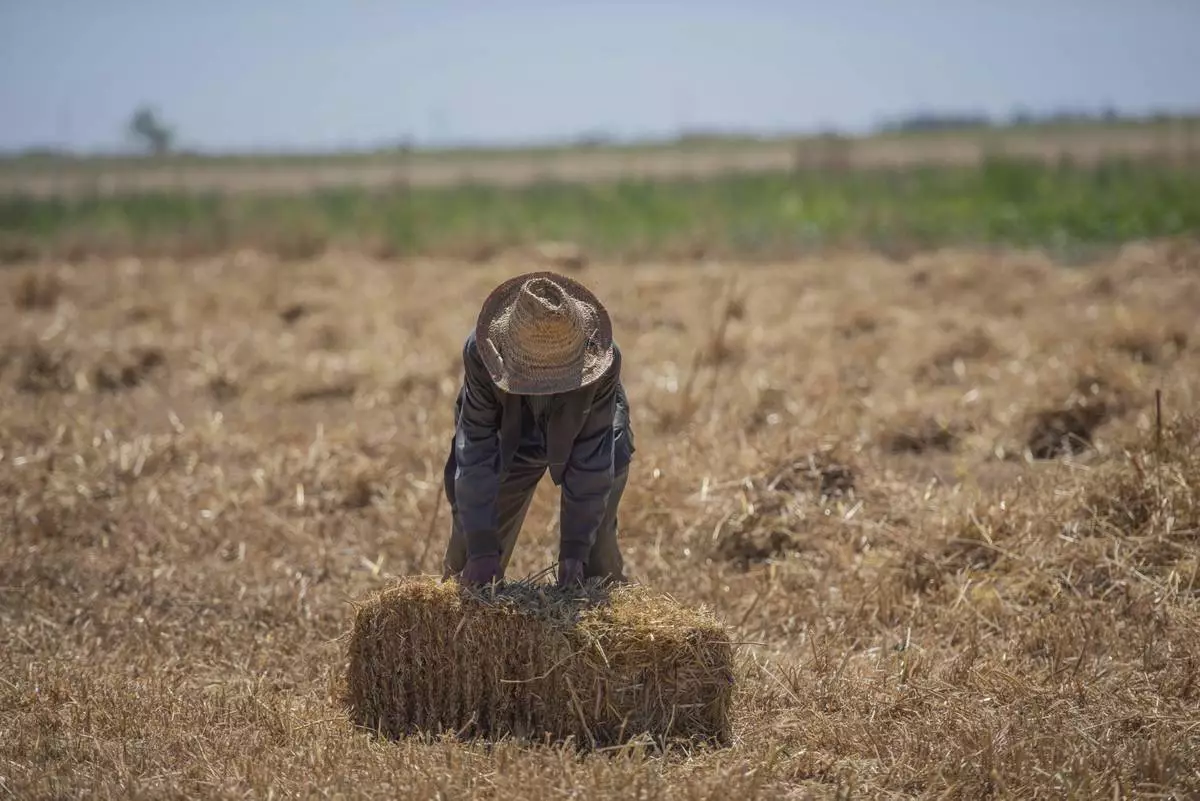
A farmer works in a wheat field on the outskirts of Kenitra, Morocco, Friday, June 21, 2024. (AP Photo)
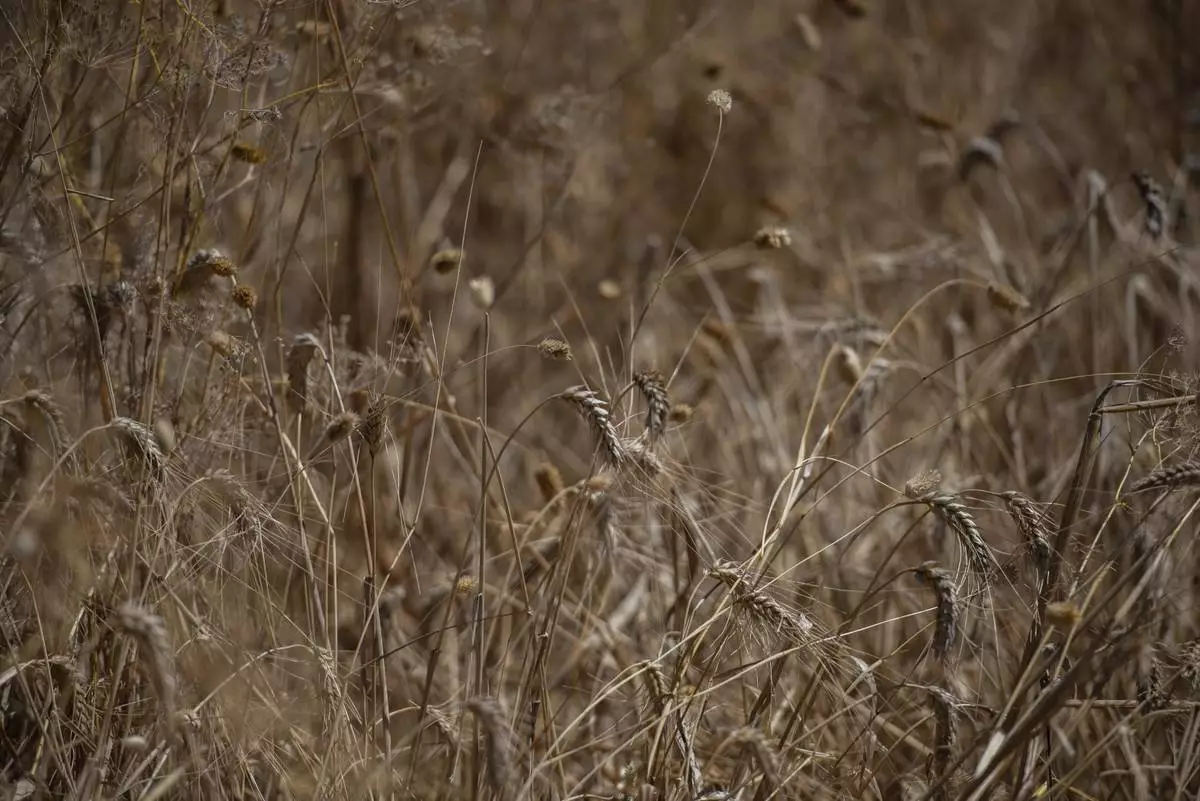
Wheat grows in a wheat farm on the outskirts of Kenitra, Morocco, Friday, June 21, 2024. (AP Photo)
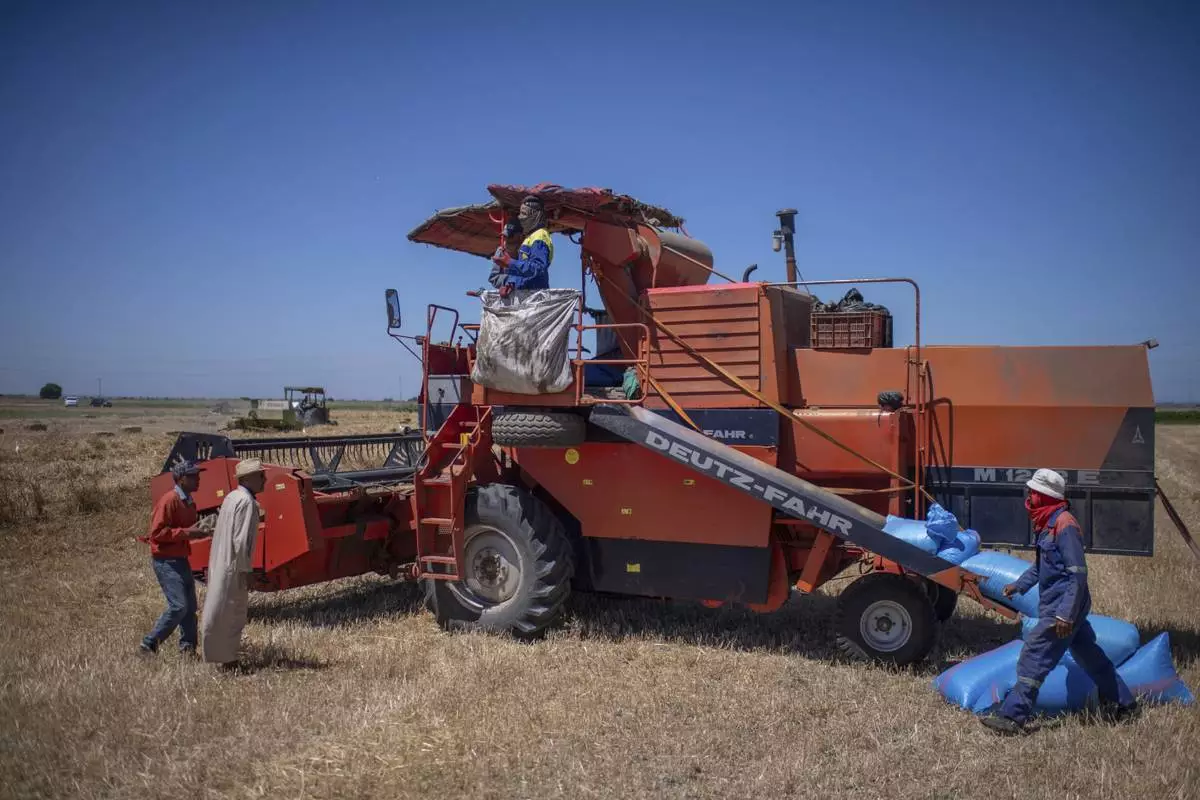
Farmers work on a wheat farm on the outskirts of Kenitra, Morocco, Friday, June 21, 2024. (AP Photo)
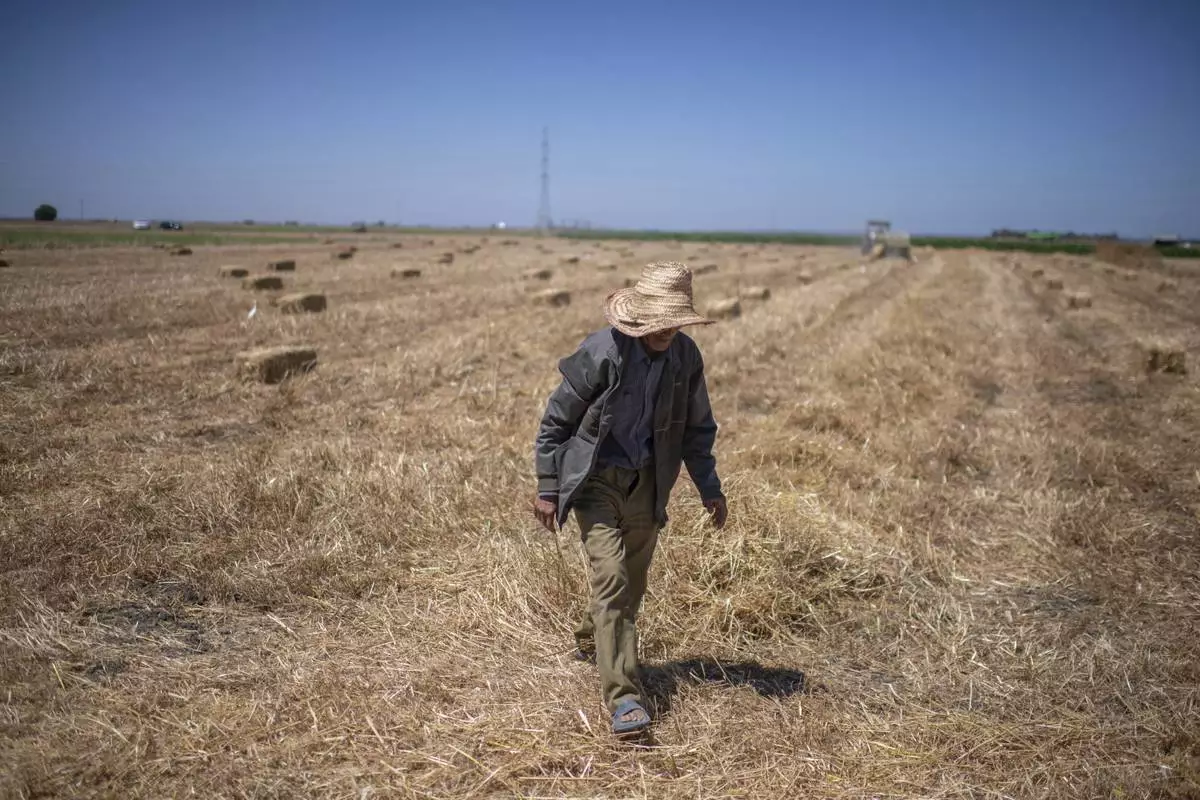
A farmer works in a wheat field on the outskirts of Kenitra, Morocco, Friday, June 21, 2024. Golden fields of wheat no longer produce the bounty they once did in Morocco. A six-year drought has imperiled the country's entire agriculture sector, including farmers who grow cereals and grains used to feed humans and animals. (AP Photo)
DEIR AL-BALAH, Gaza Strip (AP) — Israel struck tents outside two major hospitals in the Gaza Strip overnight, killing at least two people, including a local reporter, and wounding another nine, including six reporters, medics said Monday.
Fifteen other people were killed in separate strikes across the territory, according to hospitals.
Israel has carried out waves of strikes across Gaza and ground forces have carved out new military zones since it ended its ceasefire with Hamas last month. Israel has barred the import of food, fuel, medicine and humanitarian aid for well over a month as it seeks to pressure Hamas to accept changes to the truce agreement they reached in January.
A strike on a media tent outside Nasser Hospital in Khan Younis at around 2 a.m. set the tent ablaze, killing Yousef al-Faqawi, a reporter for the Palestine Today news website, and another man, according to the hospital. Six other reporters were also wounded in the strike.
The Israeli military said it hit a Hamas militant, without providing further information. The military says it tries to avoid harming civilians and blames Hamas for their deaths because it is deeply embedded in residential areas.
Israel also struck tents on the edge of Al-Aqsa Martyrs Hospital in the central city of Deir al-Balah, wounding three people, according to the hospital.
Nasser Hospital said it received another 13 bodies, including six women and four children, from separate strikes overnight. Al-Aqsa Hospital said two people were killed and three wounded in a strike on a home in Deir al-Balah.
Thousands of people have sheltered in tents set up inside hospital compounds throughout the 18-month war, assuming Israel would be less likely to target them. Israel has raided hospitals on several occasions, accusing Hamas of using them for military purposes, allegations denied by hospital staff.
The war began when Hamas-led militants stormed into Israel on Oct. 7, 2023, rampaging through army bases and farming communities and killing some 1,200 people, mostly civilians. They abducted 251 people, and are still holding 59 captives — 24 of whom are believed to be alive — after most of the rest were released in ceasefires or other deals.
Israel has vowed to keep escalating military pressure until Hamas releases the remaining hostages, lays down its arms and leaves the territory. Prime Minister Benjamin Netanyahu says he will then implement U.S. President Donald Trump's proposal to resettle much of Gaza's population to other countries through what the Israeli leader refers to as “voluntary emigration.”
Palestinians say they do not want to leave their homeland, and human rights experts have warned that implementing the Trump proposal would likely amount to mass expulsion in violation of international law.
Netanyahu will meet with Trump in Washington on Monday to discuss Gaza and other issues.
Dozens of protesters gathered outside Netanyahu's official residence in Jerusalem to call for an agreement to release the captives. Many fear that Netanyahu's decision to resume the fighting has put the remaining hostages in grave danger and hope Trump can help broker another deal.
“Now the moment of truth has come," said Varda Ben Baruch, grandmother of Israeli-American hostage Edan Alexander, addressing Netanyahu. “You are in the United States and you have to sit there with President Trump and close a deal so that everyone will be released home.”
Israel's military offensive has killed over 50,000 Palestinians, mostly women and children, according to Gaza's Health Ministry, which does not say how many of the dead were militants or civilians. Israel says it has killed around 20,000 militants, without providing evidence.
The offensive has destroyed vast areas of Gaza and at its height displaced around 90% of its population.
This story has been corrected to show that Palestine Today is a news website, not a TV station.
Magdy reported from Cairo.
Follow AP’s war coverage at https://apnews.com/hub/israel-hamas-war
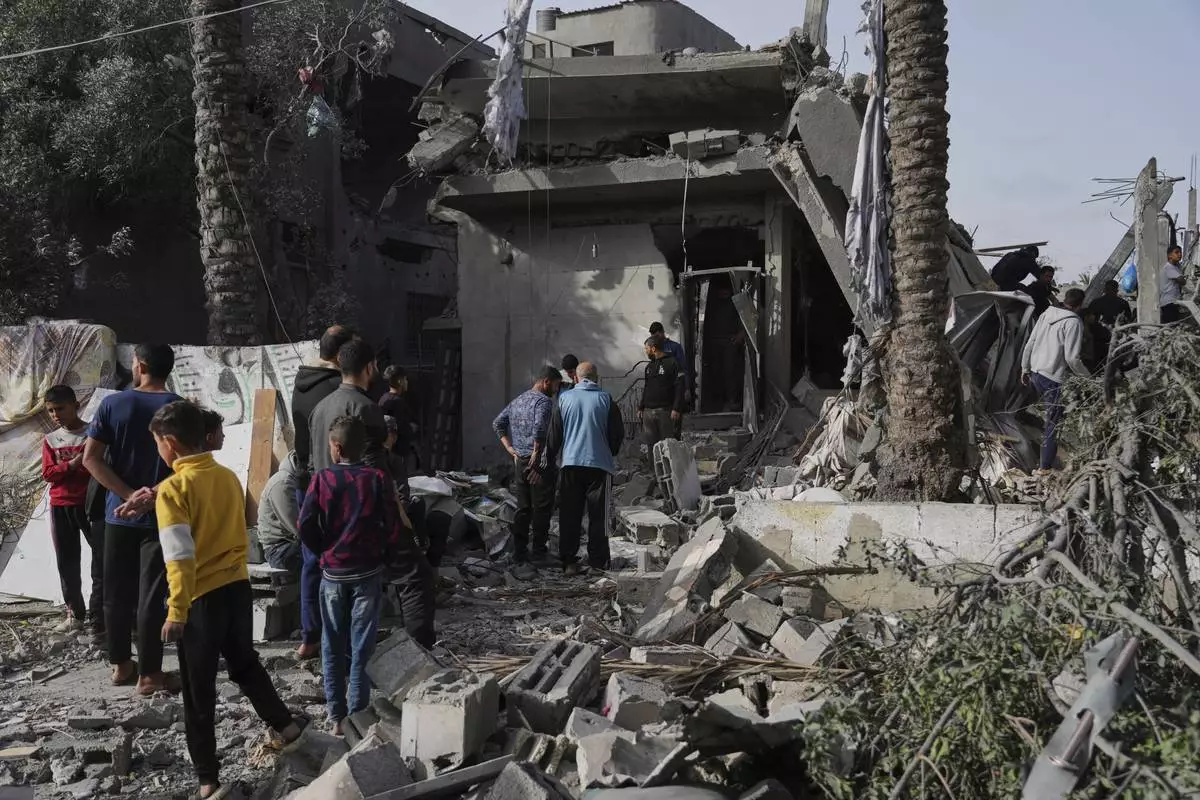
Palestinians inspect the site hit by an Israeli strike in Deir al-Balah, Gaza Strip on Monday, April 7, 2025. (AP Photo/Abdel Kareem Hana)
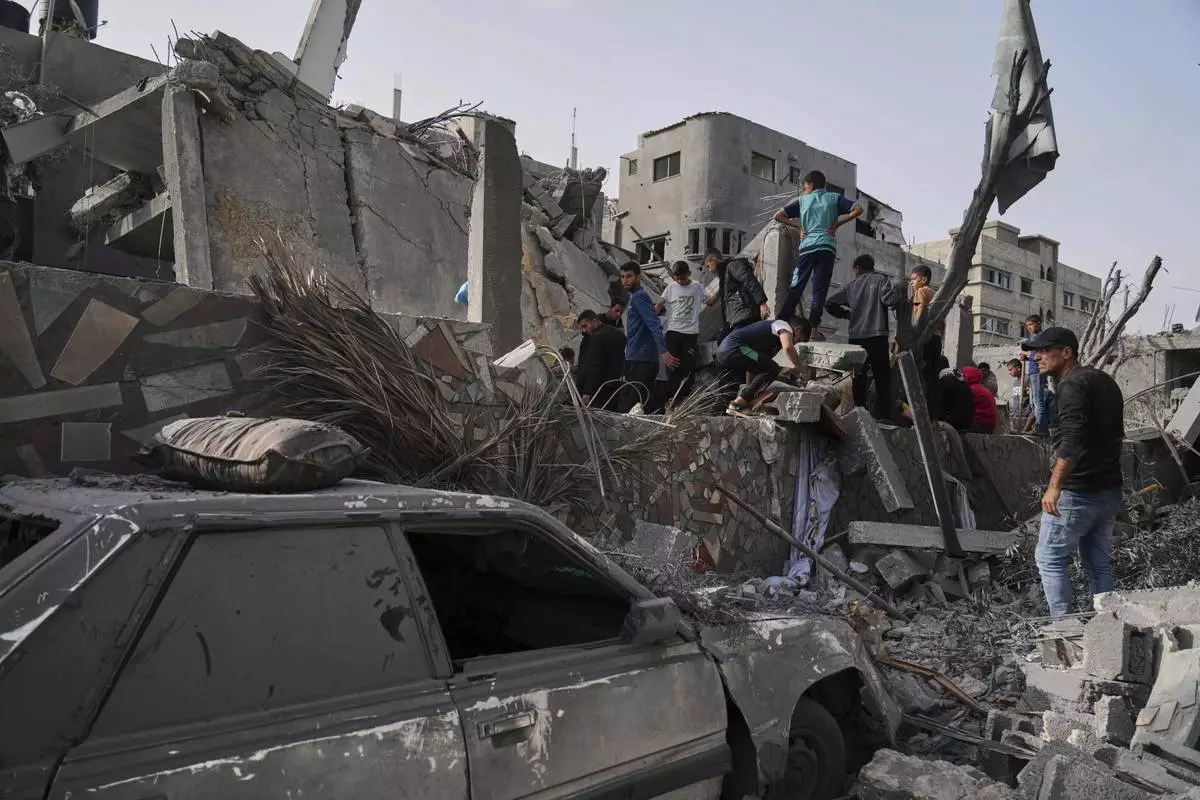
Palestinians search for survivors amid the debris of a building destroyed by an Israeli airstrike in Deir al-Balah, Gaza Strip, on Monday, April 7, 2025. (AP Photo/Abdel Kareem Hana)
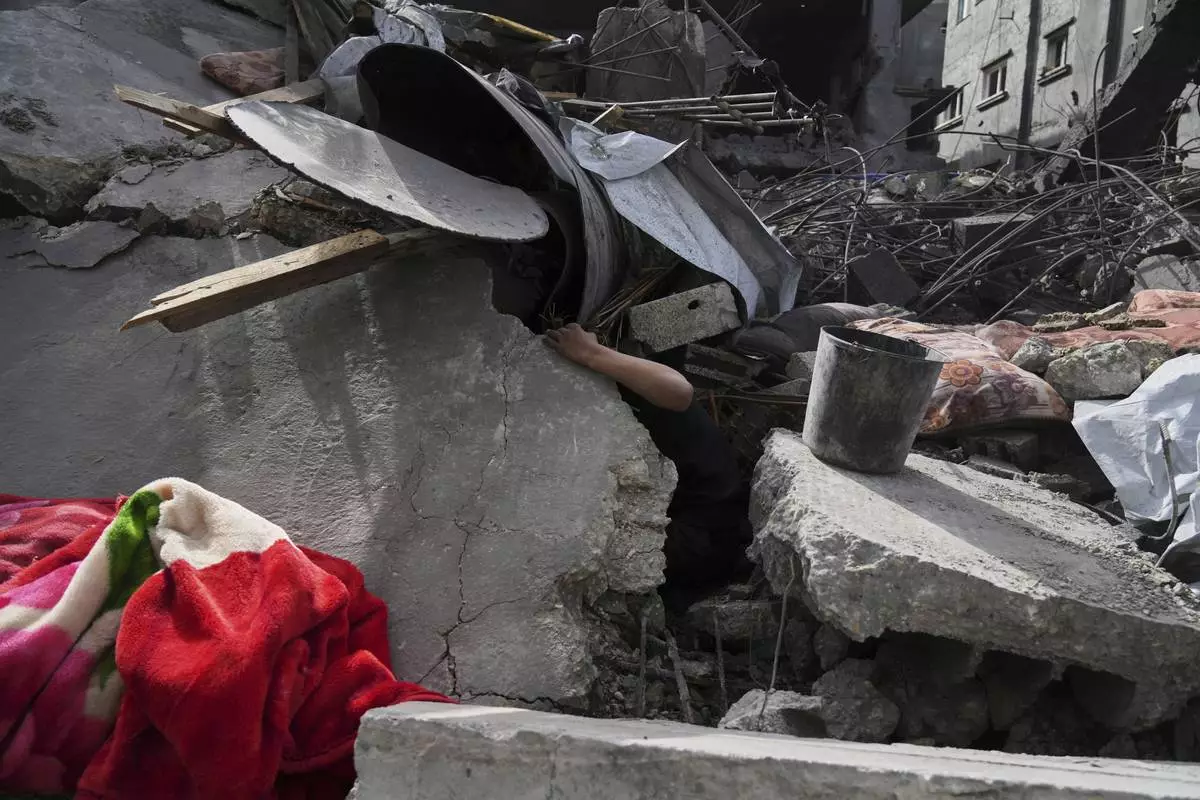
Palestinians search for survivors amid the debris of a building destroyed by an Israeli airstrike in Deir al-Balah, Gaza Strip, on Monday, April 7, 2025. (AP Photo/Abdel Kareem Hana)
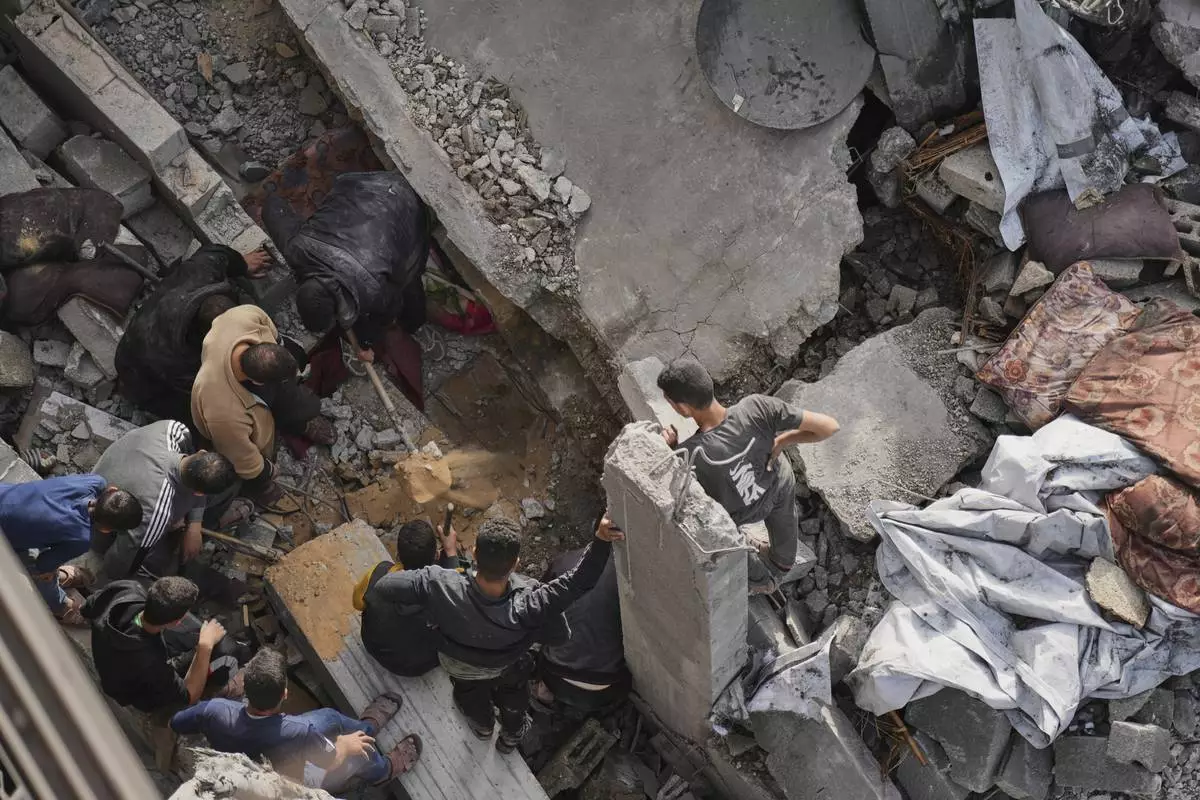
Palestinians search for survivors amid the debris of a building destroyed by an Israeli airstrike in Deir al-Balah, Gaza Strip, on Monday, April 7, 2025. (AP Photo/Abdel Kareem Hana)
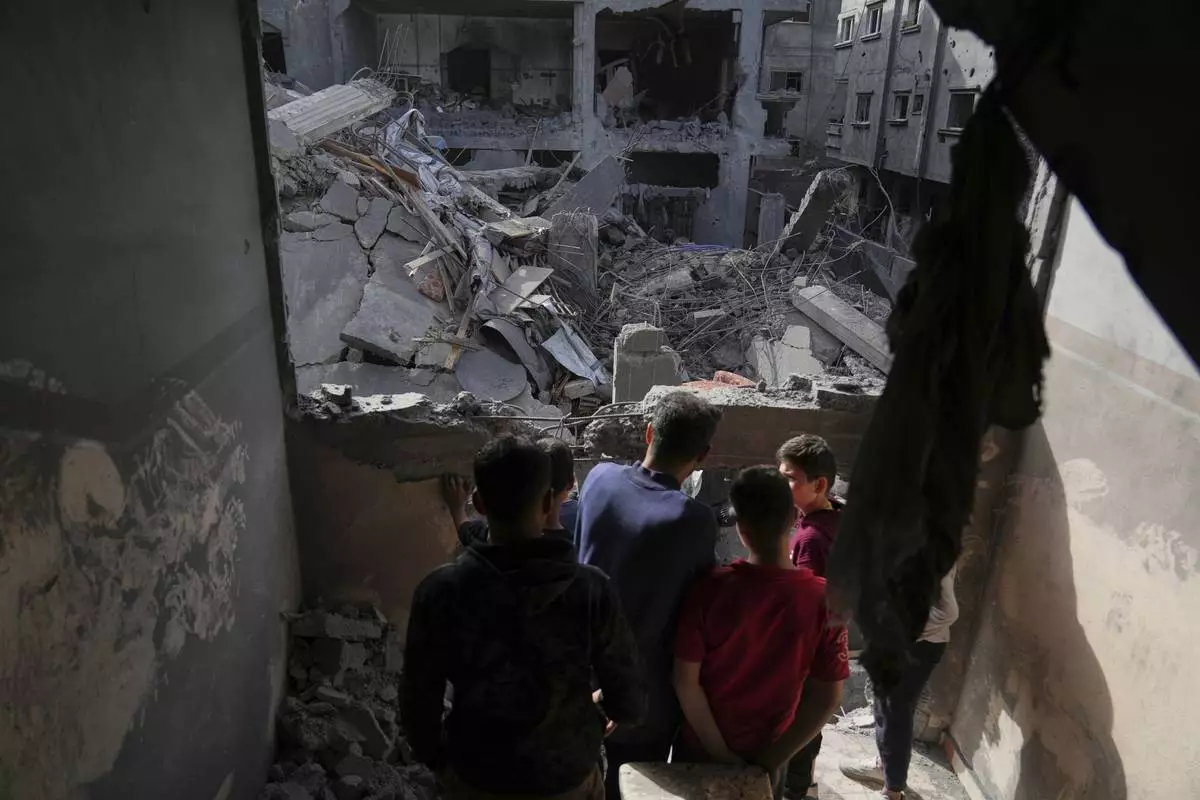
Palestinians inspect the site hit by an Israeli strike in Deir al-Balah, Gaza Strip on Monday, April 7, 2025. (AP Photo/Abdel Kareem Hana)
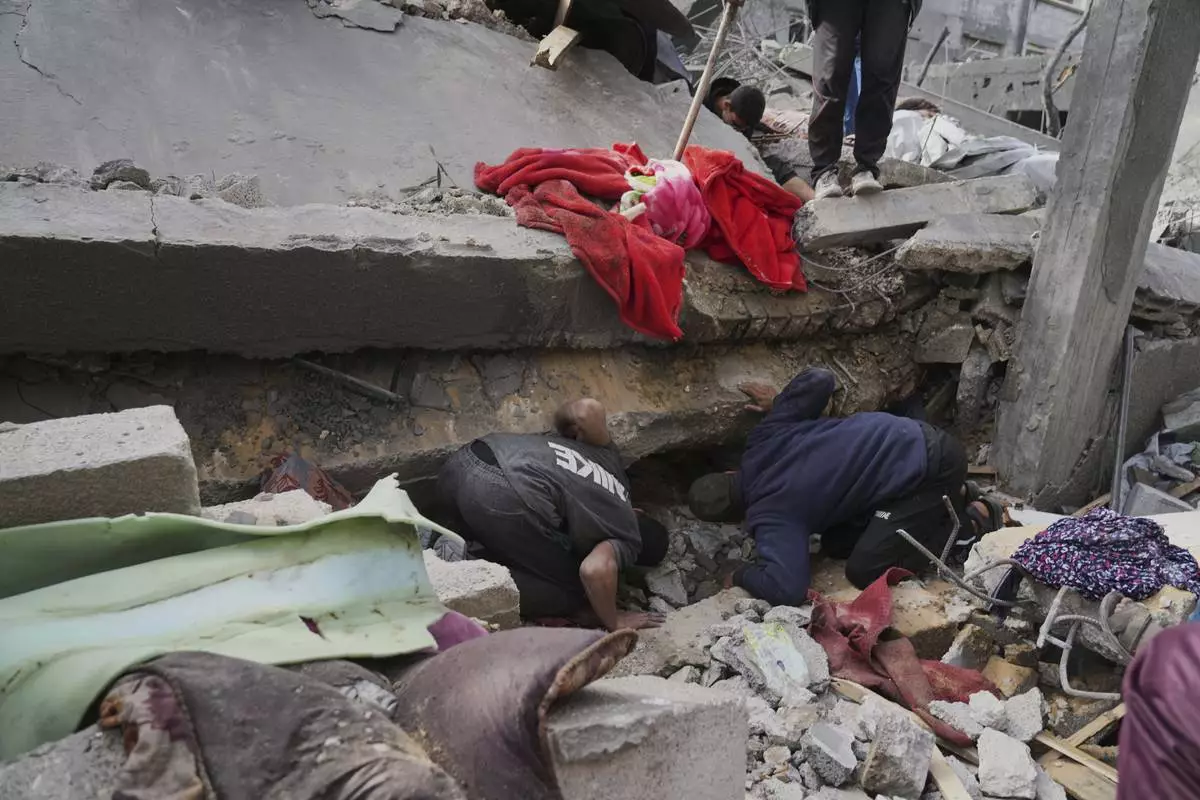
Palestinians search for survivors amid the debris of a building destroyed by an Israeli airstrike in Deir al-Balah, Gaza Strip, on Monday, April 7, 2025. (AP Photo/Abdel Kareem Hana)

Palestinians search for survivors amid the debris of a building destroyed by an Israeli airstrike in Deir al-Balah, Gaza Strip, on Monday, April 7, 2025. (AP Photo/Abdel Kareem Hana)

Palestinians retrieve a body from the rubble of a building destroyed by an Israeli airstrike in Deir al-Balah, Gaza Strip, on Monday, April 7, 2025. (AP Photo/Abdel Kareem Hana)
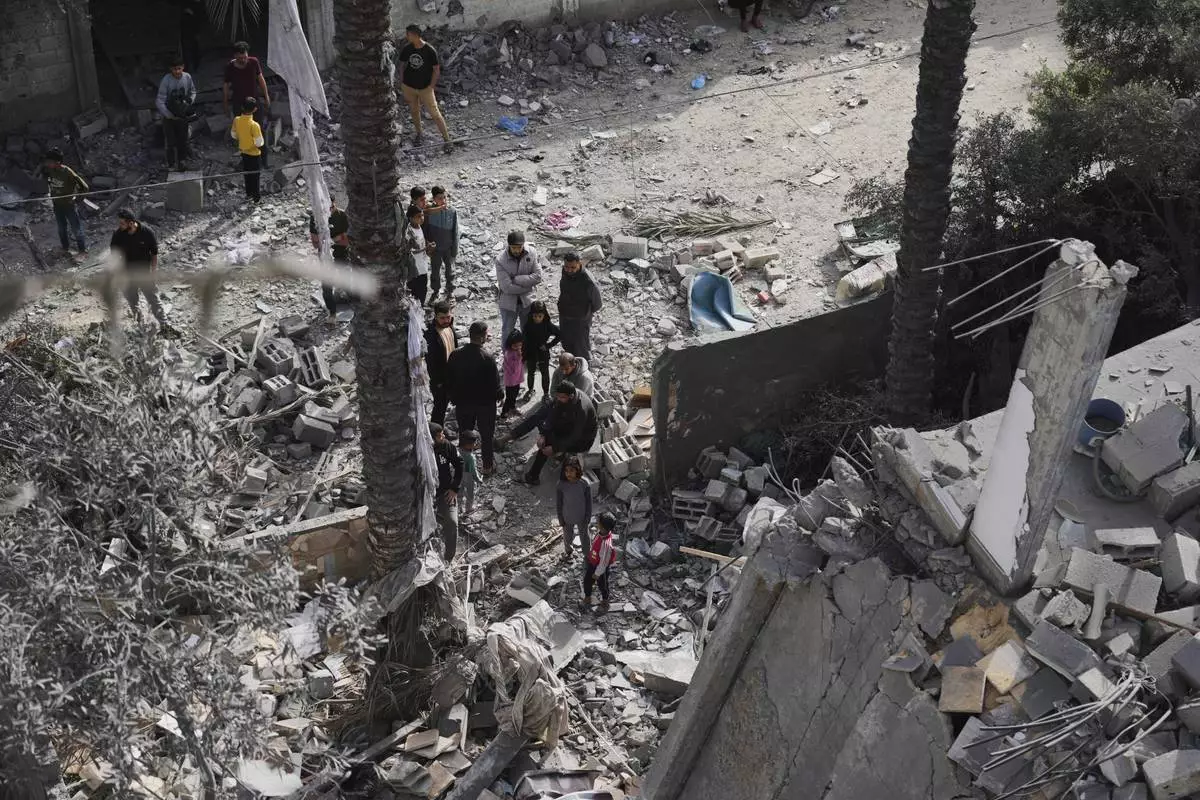
Palestinians inspect the site hit by an Israeli strike in Deir al-Balah, Gaza Strip on Monday, April 7, 2025. (AP Photo/Abdel Kareem Hana)
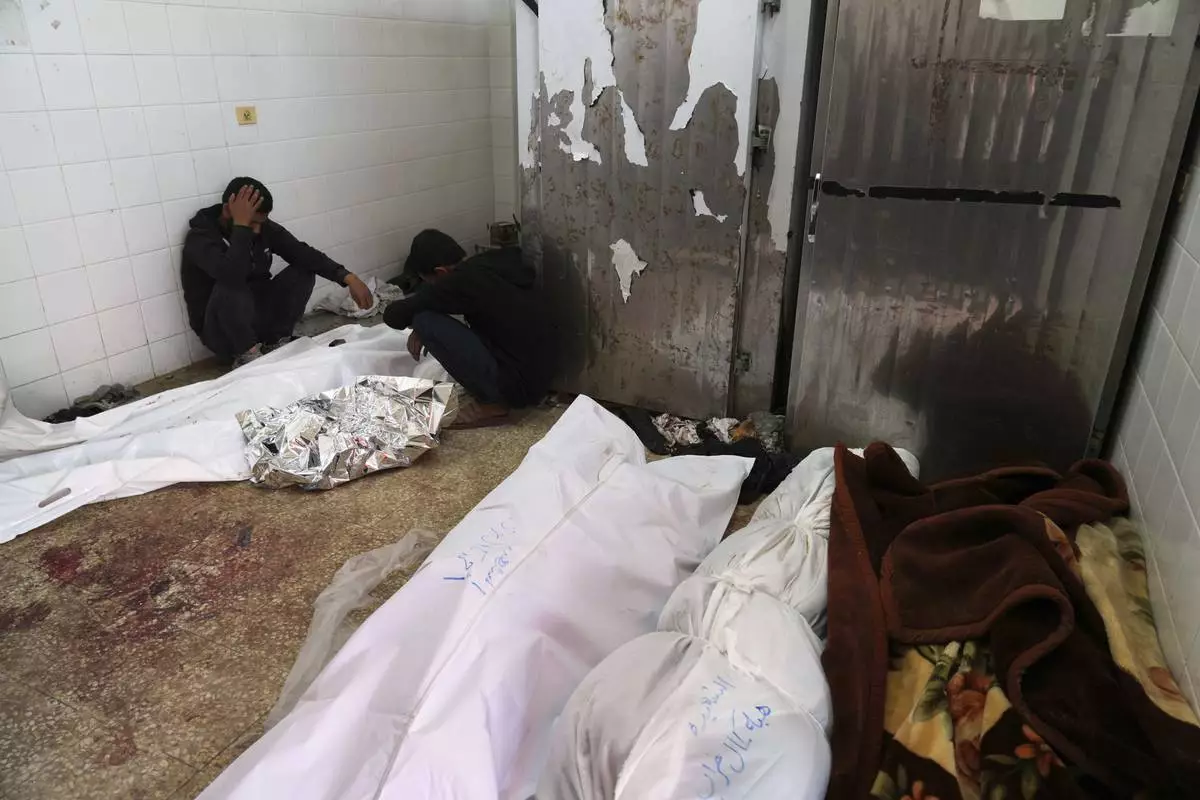
Palestinians mourn their relatives who were killed by an Israeli airstrike, at the hospital morgue in Deir al-Balah, Gaza Strip, on Monday, April 7, 2025. (AP Photo/Abdel Kareem Hana)
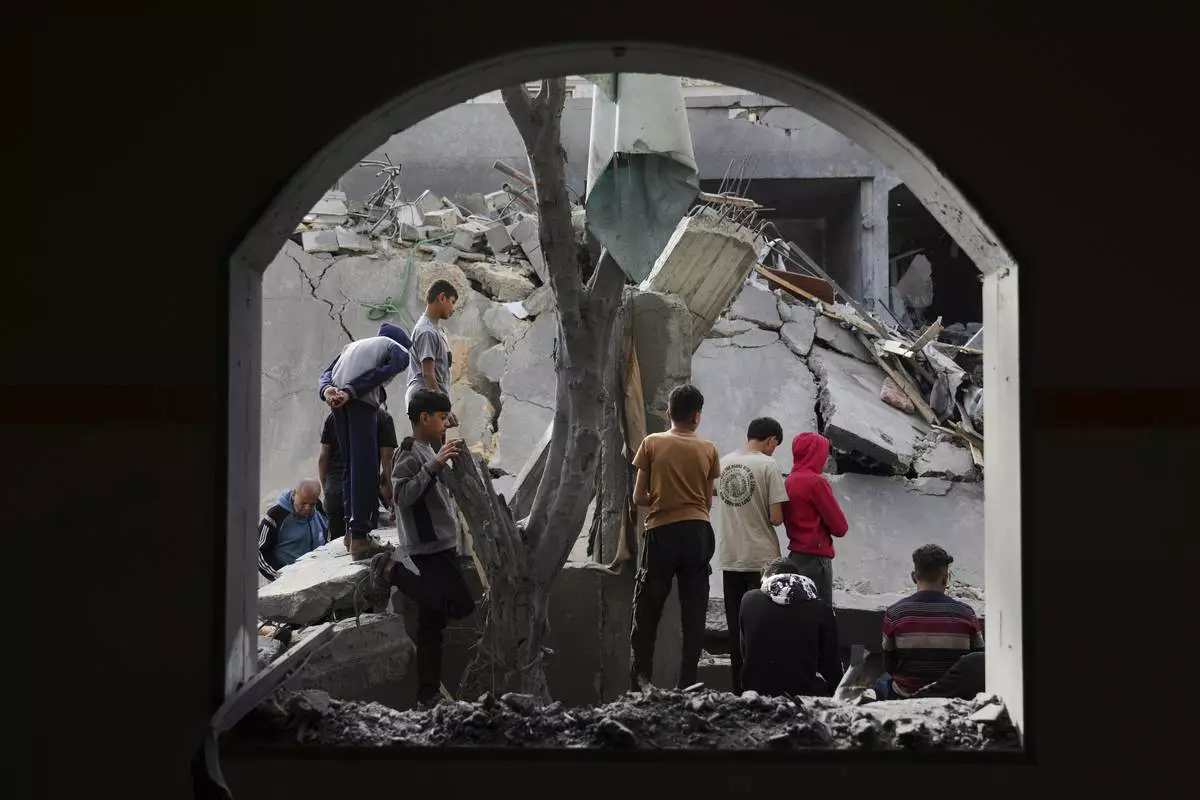
Palestinians inspect the site hit by an Israeli strike in Deir al-Balah, Gaza Strip on Monday, April 7, 2025. (AP Photo/Abdel Kareem Hana)

FILE - Israeli tanks maneuver along the border with north of the Gaza Strip, as seen from southern Israel, March 18, 2025. (AP Photo/Ohad Zwigenberg, File)









